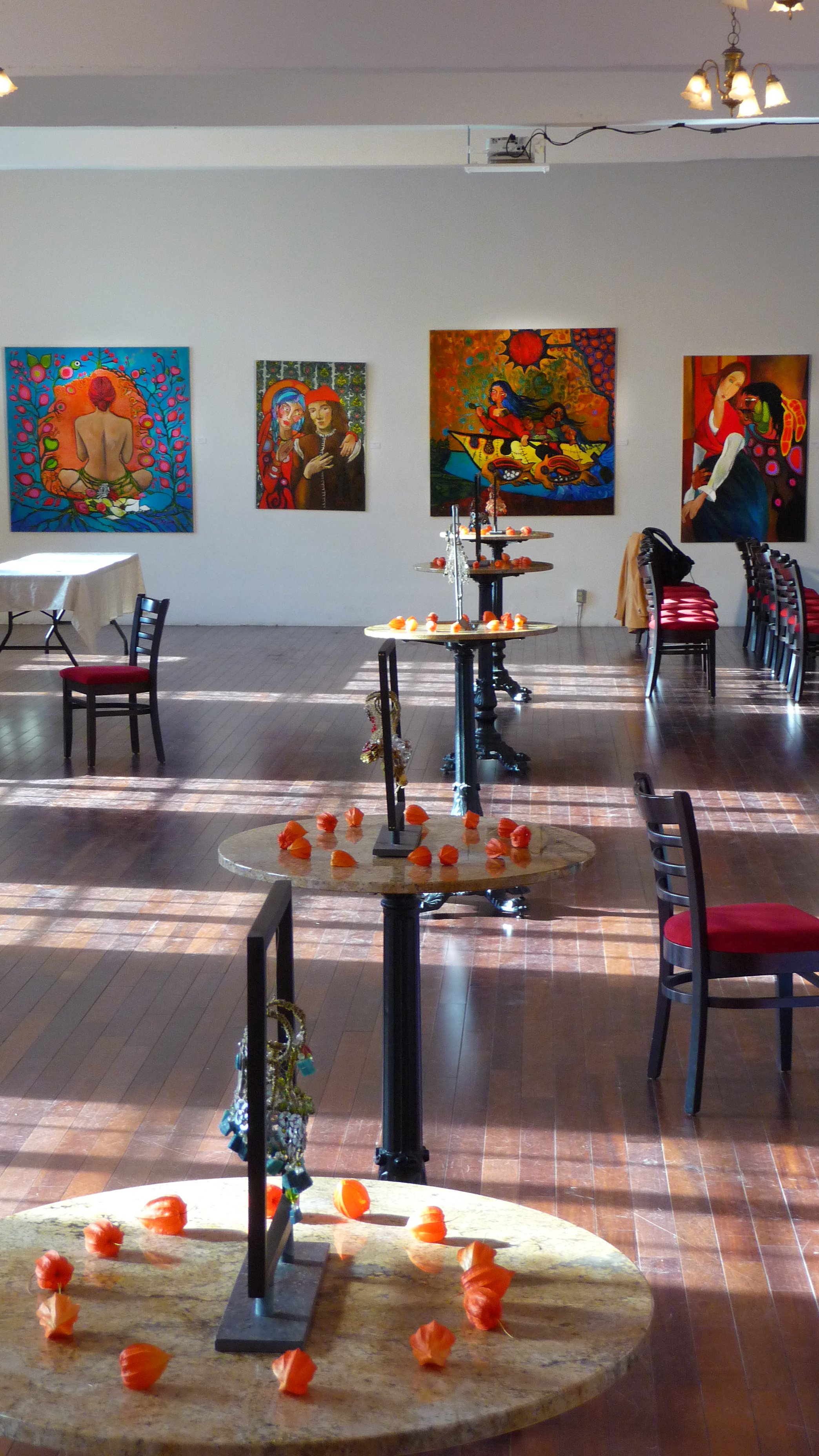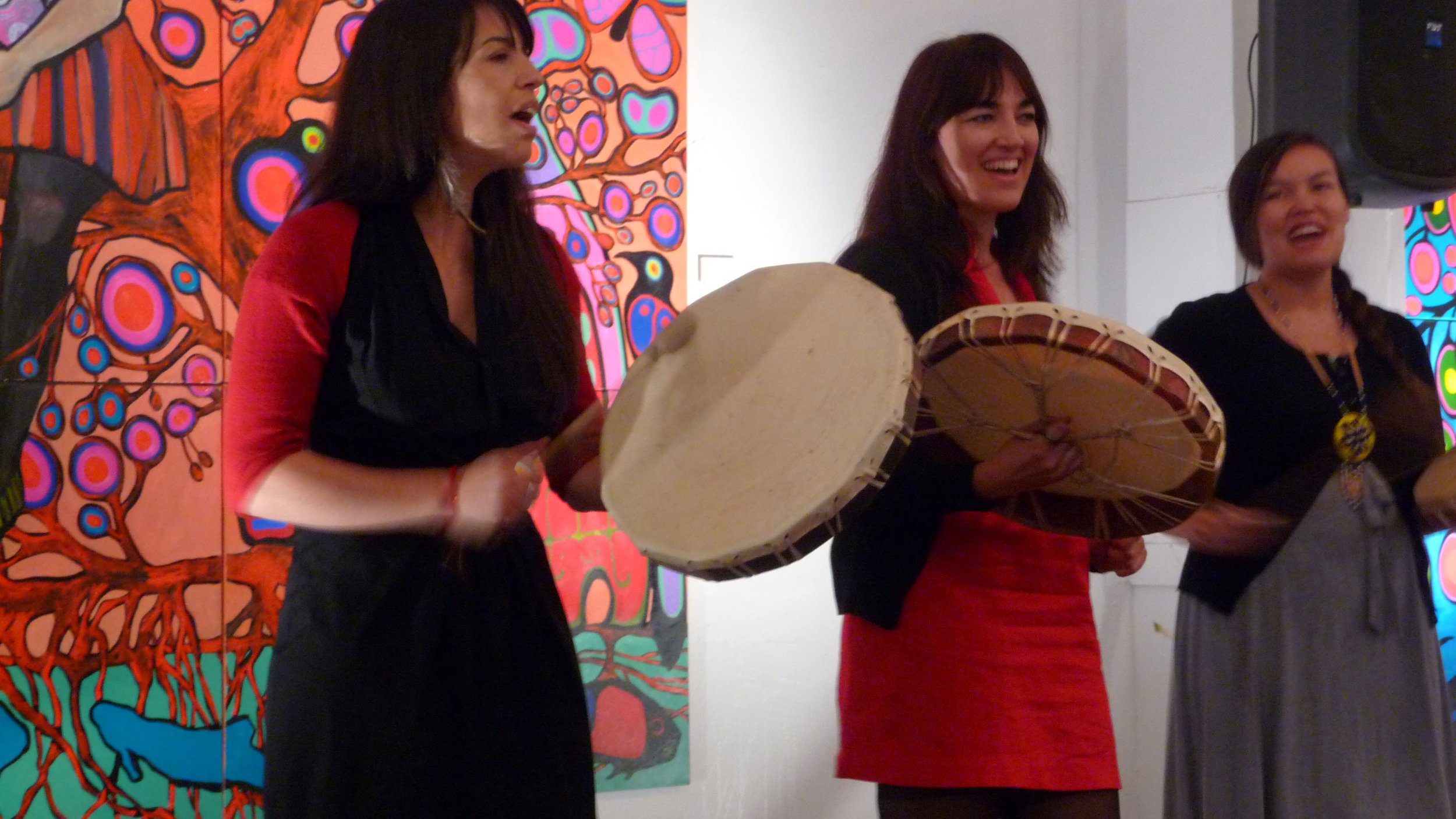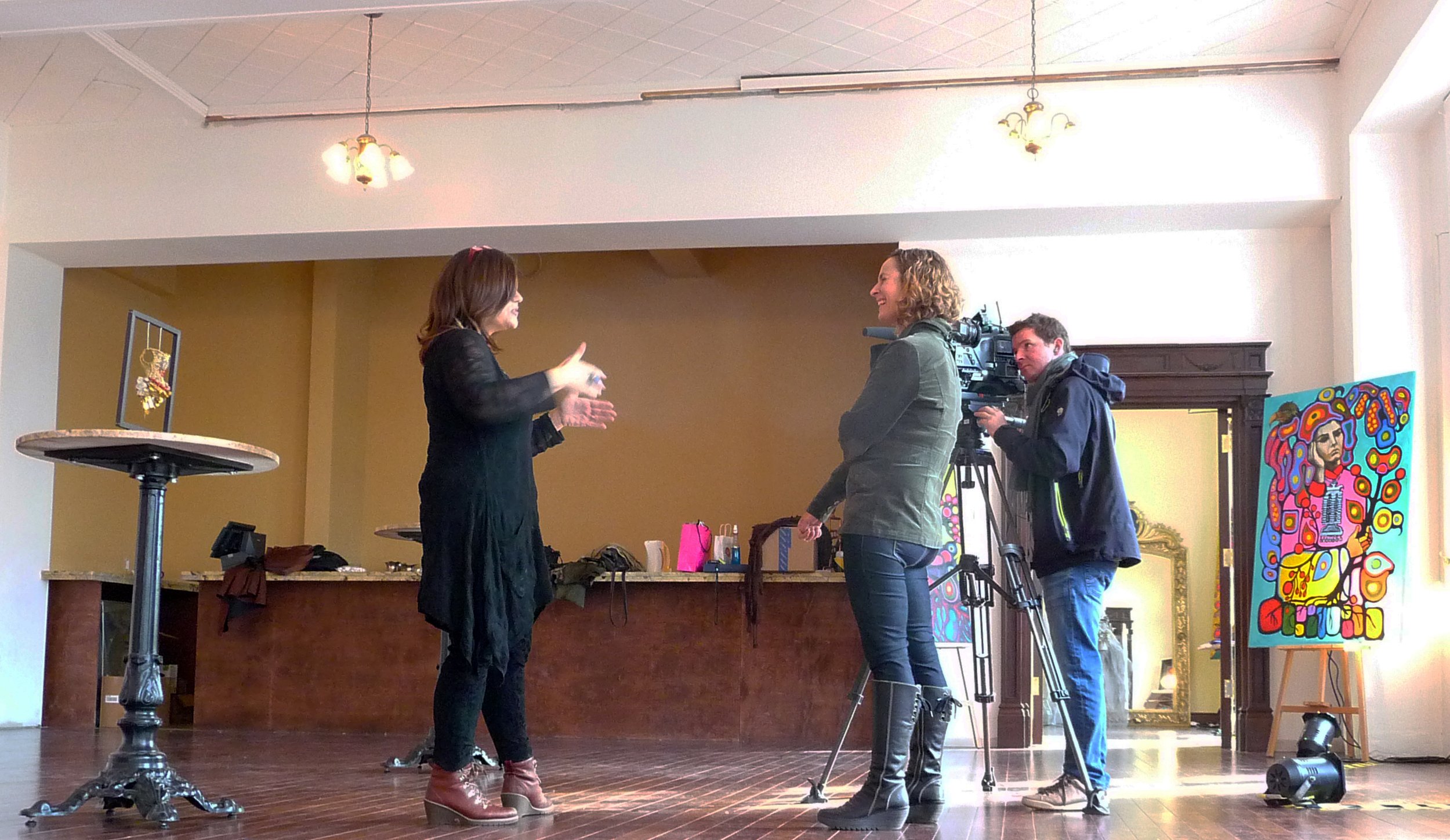
NATIVE IMMIGRANT
2013
We’re all in the same boat.
October 23rd to November 3rd, 2013
Native Immigrant aimed to present an inclusive vision in the face of the exclusion that some see as a force dividing Québec society.
"I saw it as a fantastic opportunity to finally include immigrants in the dialogue. I invited the public to take part in a collective work of art based on my own and others’ experiences as newcomers to Canada. We are all immigrants like it or not. We just have different arrival dates" says founder, Carolina Echeverría.
Carolina invited the public to take part in a collective work of art based on her own, and others’, experiences as newcomers to Canada.
Both projects allowed for open dialogue about immigration, and our mutual connections as Native Immigrants and the people of this Uncertain Nation.
The exhibit was framed by a new collection of thirty paintings created by the Carolina Echeverría bringing together the influence of Norval Morrisseau, Algonquin artist and creator of the Woodland School of Art, and Brigada Ramona Parra, a 1970’s leftist muralist movement inspired by the aesthetics of the indigenous peoples of Chile.
This idea came to me as an opportunity to co-create. We are all threads in the fabric of this culture. Was I capable of sharing my artistic creation? Allow my own cultural appropriation? So many young artists are frozen by the intellectual fear of being perceived as culturally appropriating other cultures. Yet, as an artist born in Chile, living in Canada for over 27 years and with an DNA that includes 87% basque blood, 10% native and the rest, Berber, Ashkenazim and Asian, which culture is truly mine? The adopted one, the inherited one? The one that raped the other? All inside of me?
- Carolina Echeverría, Montreal, November 26th, 2013
Community
Collaboration
Visitors were invited to express their experience by participating in the creation of two works of art:
The Charter of Immigrant Values, a large mural to be completed by guests and visitors, as a kind of painted manifesto of Native Immigrants.
And Native Immigrant Dress, a naked mannequin planted in a pot of indigenous earth was adorned with a dress made up of donated fabric or other objects of sentimental multicultural value.
Weeks after the exhibition, some of the participants met at my studio for a potluck. We miss each other; we’ve all become friends. We talk about the experience, and about what might come next. Habiba mentions how the dress looks like a plant that grew inside that pot. I mention that I am writing a methodology of this activity, and it is not possible, this chapter has not happened. We all agree the dress has stopped, anything else would only be adornment. We agree we don’t know the outcome, not yet. I tell them I want the dress to go to Kahnawake and to propose that this community—which existed centuries before the Europeans settled North America—should get to practice its own cultural appropriation.
Judith tells me that these cultures I am “appropriating”, Brigada Ramona Parra and Norval Morrisseau, they are my cultural references. They inspired me, and that inspiration gave way to this: this exhibition and this Immigrant Dress.
My experience has been a good one. It did not rob me of my artistic creations, instead it actually expanded my work.
My vision now is to find a final home for the Immigrant Dress at a large airport where it will honour and greet all new immigrants as they deserve to be recognized, honouring and validating their incredible act of faith and courage.
- Carolina

























